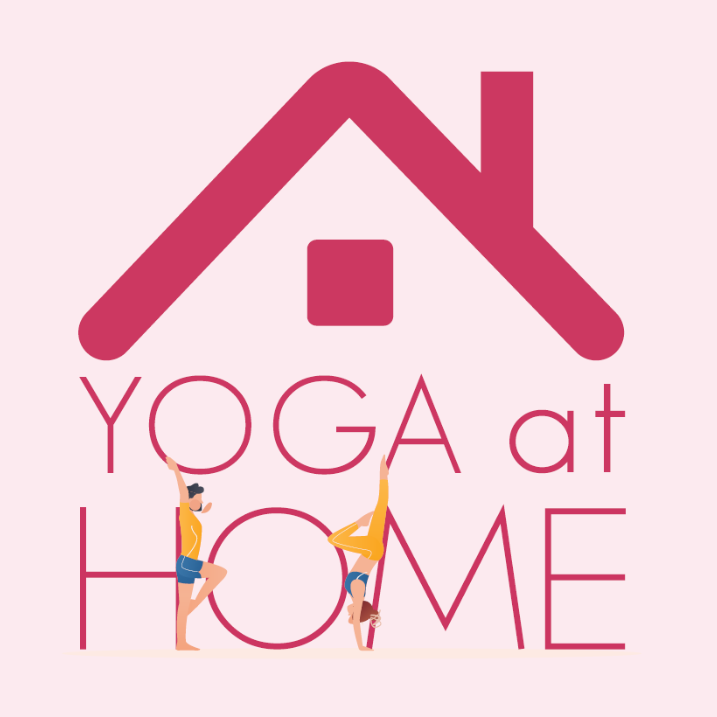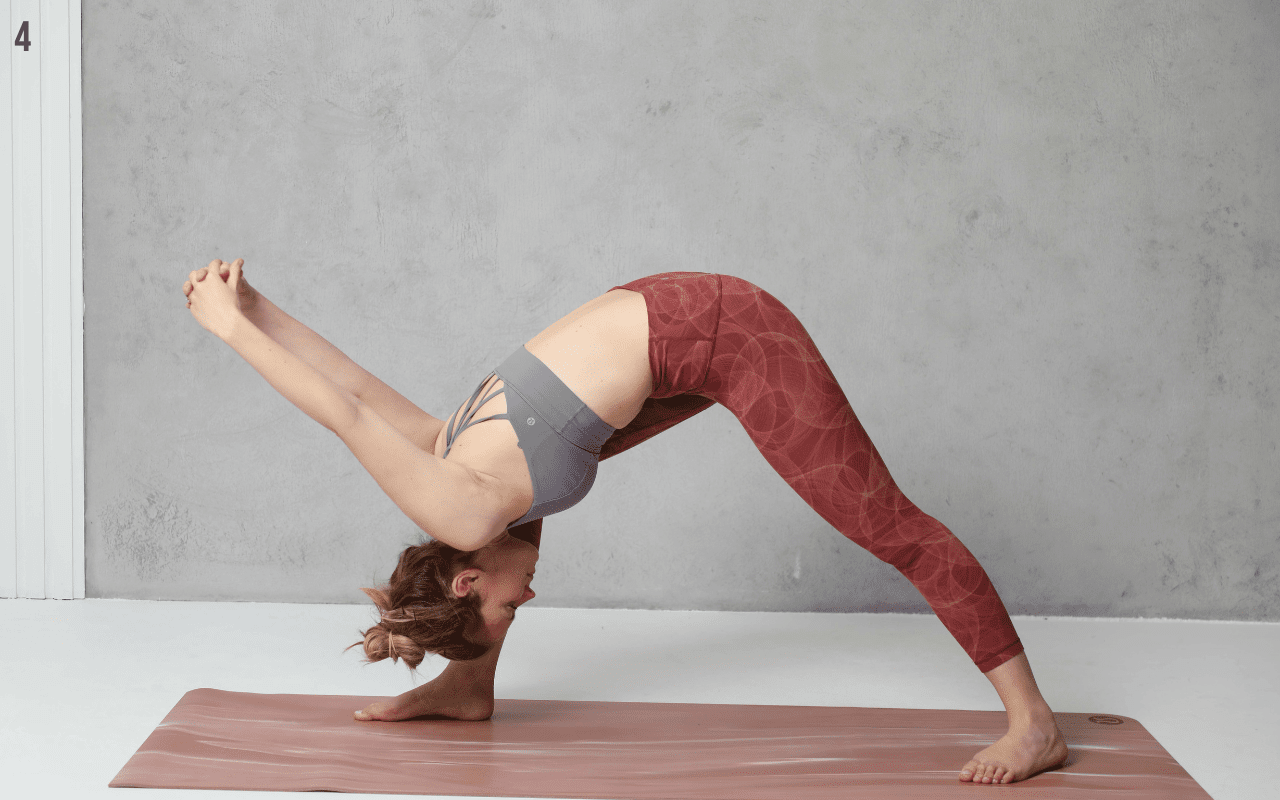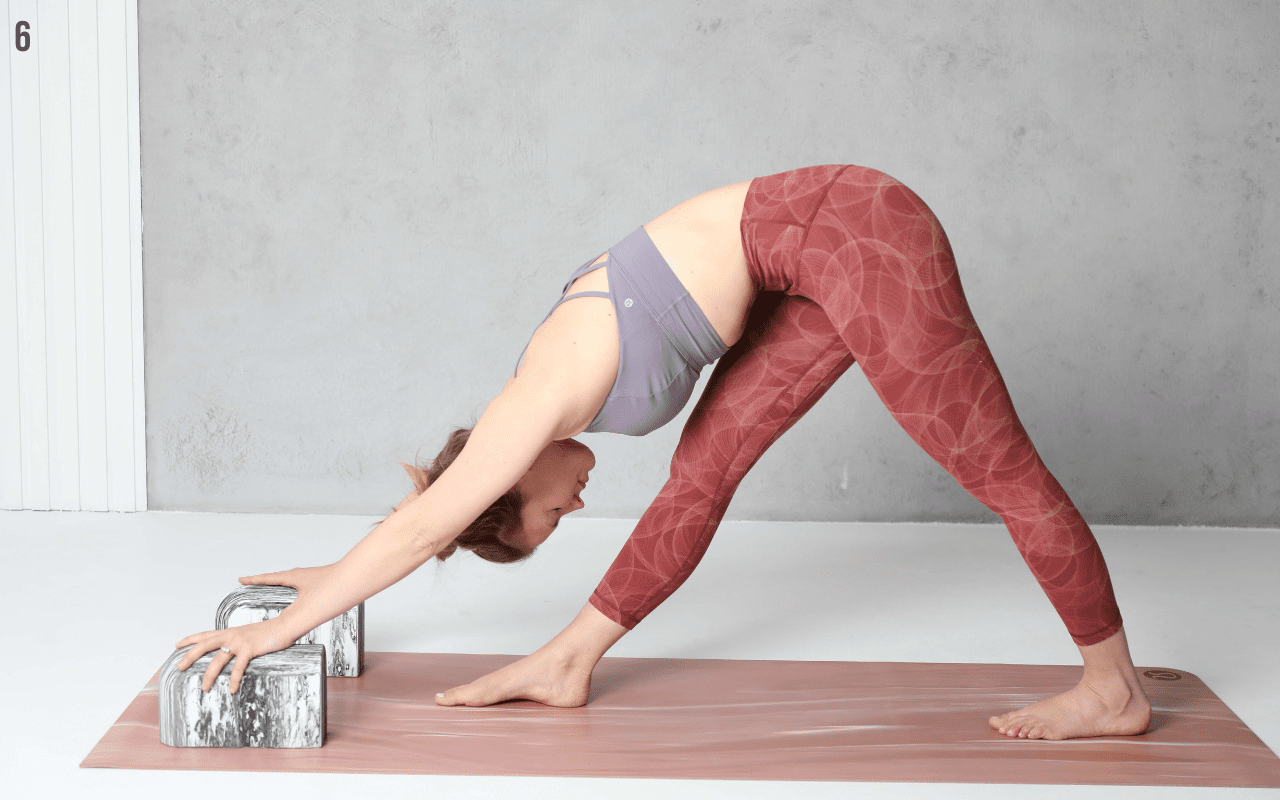
Balancing souls
Here we move within a standing sequence to find our centre of gravity through the soles of our feet — our beloved balancing ‘souls’. Can you quieten your mind, while the physical self surrenders into the earth’s core? By Isabel Lankester


1. Half-Way Lift (Ardha Uttanasana)
Begin in standing at the top of your mat (samasthiti, image not shown), hands at your heart, eyes closed. Take a deep breath in and exhale into the soles of your feet. Feel a slight spreading of your toes as you focus the mind inwards. Begin to study your internal environment; notice how your mind feels at ease as you draw weight equally into both feet.
Now open your eyes, inhale and reach your arms upwards to urdhva hastasana (upwards salute, not shown), exhale as you forward fold to uttanasana (standing forward bend, not shown). Start to inhale towards a half-way lift of the spine) ardha uttansana). Feel your navel draw upwards towards the spine; there is an extension forward of the chest as you lean back into your heels.
Now start to step back into plank, exhale lower the knees, chest and chin before rising up into a baby cobra (bhujangasana, not shown). Press into the front of your feet and lengthen into your crown. Exhale start to draw back into downward-facing dog (adho mukha svanasana, not shown) where you can walk out your legs by alternatively bending your knees. This will also drive awareness into the soles of the feet. We are nearly ready for our first balance!
2. Knees Up Balance
When you are ready make your way to the top of your mat, remain in a forward fold, inhale to ardha uttanasana, before releasing the spine completely in uttanasana (not shown). Inhale, press into your feet and raise your arms over head, looking towards your thumbs in urdhva hastana (upwards salute, not shown). Exhale bring the hands back to your heart, begin to settle your breathing. Calm down your nervous system by gazing at one point on the wall ahead, your drishti, or gaze point. Keep your eyes on this point, as you press hard into your right foot. Start to raise your left knee to your chest (Knee up). Find your balance here as you pause for four or five breaths. Of course, if you need extra stability, place one hand on a wall for balance. Remember: this is your first standing balance so take it easy, be at peace with a gentle wobble. If you fall, come straight back in. Once completed, repeat this one-legged balance on your left foot, bringing the right knee to your chest.

3. Warrior I (Virabhadrasana 1)
To reset the body again press into both feet and raise your arms overhead, looking towards your thumbs in urdhva hastasana (upwards salute, not shown). Exhale, bring the hands back to your heart. Calm your breathing. Keep your hands at your heart as you take a big step backwards with your left leg, entering warrior 1 (virabhadrasana 1). With the right knee bent and the left leg extending, press actively down the left heel, and left inner arch of your foot. Even though you are pressing into both feet, the gaze upwards to your thumbs adds a little extra balance here.


4. Humble Warrior (Baddha Virabhadrasana)
After taking a few breaths, start to interlace the fingers behind your back, take an inhale, look upwards and prepare for humble warrior (baddha virabhadrasana). Heel toe the right foot slightly further outwards to you have space in your hips to forward fold towards the earth.
This pose offers us a chance to delve into the mind: notice what pops up when you are asked to hold this position. Can you surrender into the earth and find mental ease as you press evenly down in both feet? There is a huge array of benefits to this asana, opening the hips and heart, as well as lengthening down the left hamstring and calf muscle. Can you soften as you release the back of your neck?
After taking a few breaths, inhale and reach your arms back up to a warrior 1. Place your hands to your heart, step forward to the top of your mat and repeat the sequence on the left foot as you step back with your right leg into a warrior 1. Here, you'll move through warrior 1 and humble warrior on the left leg. After you've completed this side, place your hands down to the top of your mat and step back into downward-facing dog (adho mukha svanasana, not shown) where you can shake out your hips and pedal out your legs to reset your body for the final chapter of this flow.

5. Revolved Standing Hand to Big Toe Pose (Parivrtta Hasta Padangushthasana)
When you're ready, make your way to the top of your mat, remain in a forward fold, inhale to ardha uttanasana, before releasing the spine completely in uttanasana (not shown). Inhale, press into your feet and raise your arms over head, looking towards your thumbs in urdhva hastasana (upwards salute, not shown). Exhale, bring the hands back to your heart, and begin to settle your breathing.
Just as we have practiced before, start to gaze at one point on the wall ahead – your drishti. Keep the eyes on this point, as you press hard into your right foot. Start to raise your left knee to your chest and begin to turn your torso to the left. Can you take your left hand to your hip and place your right hand across the left knee. When you begin to feel more balanced, turn your eyes to the left hand side and reach your left hand back behind you, this will intensify the twist of your spine. This is the modified version of Parivrtta Hasta Padangushthasana (revolved standing hand to big toe pose). If you want to move to the extended version, straighten out the left leg in your standing pose and place the right hand across the left foot. It's important to press actively downwards into the right leg as you grow tall into your spine and outwards through the top of your head.
Stay committed to this pose as you breathe slowly for five breaths. Then repeat this asana on the left leg.

6. Pyramid Pose (Parsvottasana)
To close this standing balance, release both feet to the floor. Inhale and reach your arms upwards to urdhva hastasana (upwards salute, not shown), exhale as you forward fold to uttanasana (standing forward bend, not shown). Start to inhale towards a half-way lift of the back (ardha uttanasana). Here we now lean into the palms (option to use blocks under the hands), press into the right foot and step back with the left foot. Find a super stretch down the back of your right leg; this should serve as a good counter stretch from your active balances.
Inhale extend the spine upwards before exhaling and folding deeply into the floor below into pyramid pose (parsvottanasana). Please don't worry if your legs are not straight, as the emphasis is on lengthening the spine and legs. See if you can soften through the outer edges of your feet in this passive stretch. Hold for four or five breaths before repeating on the right leg.
Once you have practiced pyramid on both sides, step into downward-facing dog. Inhale and roll the spine into plank, exhale, lower the knees, chest and chin before rising up into a baby cobra (bhujangasana, not shown). Press into the front of your feet and lengthen into your crown. Exhale start to draw back into downward-facing dog where you can walk out your legs by alternatively bending your knees.

7. Dancer Pose (Natarajasana)
Are you ready for your final standing balance? When you're ready, make your way to the top of your mat, remain in a forward fold, inhale to ardha uttanasana before releasing the spine completely in uttanasana. Inhale, press into your feet and raise your arms over head, looking towards your thumbs in urdhva hastasana (upwards salute). Exhale, bring the hands back to your heart, begin to settle your breathing.
Finally, start to gaze at one point on the wall ahead, your drishti. Keep your eyes on this point, as you press hard into your right foot. Start to lift the left foot behind you and take hold of it with the left hand, reach your right hand forward into dancer pose. This will counter balance the left leg drawing back. Can you actively press the foot into the hand to help stabilise the hips and extend the spine? Option to hold the wall for extra support and hold for four or five breaths.
Replace the right foot back to the floor, take a moment to study the effects of the balance in both feet before practicing on the other side.
After finishing the pose on the left side, close your balancing practice in standing at the top of your mat. Hands to heart, take a slow breath in, hold, and exhale.
Watch the mini sequence below, brought to you in partnership with Isabel Lankester Yoga
Enjoy the full yoga studio experience from the comfort of your own home with 100+ more on-demand and live-stream classes, from power yoga and vinyasa to yin, meditation and slow flows. isabellankesteryoga.com
Discover more Yoga at Home sequences.





